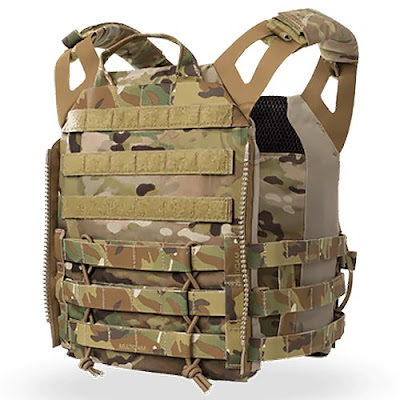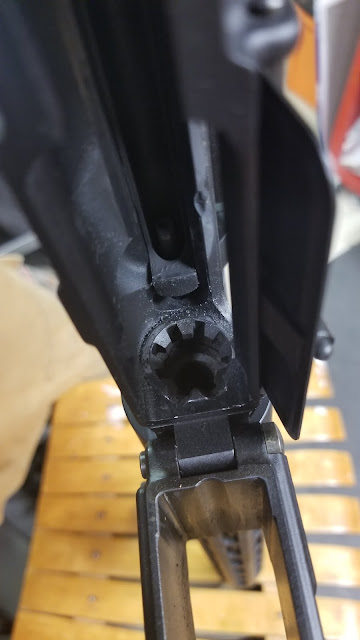Body Armor
Introduction:
Body armor is not the first thing that is usually thought of when someone thinks of firearms and self defense. People that are into firearms tend to be more into the shooting than the protection against being shot. However, some kind of body armor can be just as important as a firearm when it comes to saving your life. As forms of ballistic protection become cheaper and lighter, more and more people on both sides of the law are investing in body armor. Because of the wide range of companies making everything from Kevlar vests to ceramic-composite plates, there are many options on the market for someone looking for protection.
Details:
There are two major categories of body armor, soft armor and hard armor, each with their own benefits and limitations. Soft armor is typically Kevlar, a densely woven, fiberglass-like fabric. Soft armor is comprised of many layers of Kevlar stacked on top of one another.
The primary benefit to soft armor is its wearability. Because it is entirely fabric, it is much more flexible than other options, and is ideal for extended use. There is also a weight benefit. Soft armor weighs significantly less than most hard armor options. The downside to soft armor, however, is the level of protection that it provides. Most high-end soft armor is only rated up to .44 Magnum. This means that just about any rifle round will pass right through a Kevlar vest without an issue. Because of this, soft armor is typically used by police departments, where the majority of threats they face are pistol-caliber weapons. For rifle-caliber threats, hard armor is a necessity. Hard armor has a couple of options, namely, steel and ceramic.
Unlike soft armor, hard armor does not typically come as a vest. Instead, hard armor is an armor plate contained in a plate carrier vest. The plates can be swapped out for different plates with different protection ratings. The benefit of hard armor is that, depending on the armor level, it provides protection against threats up to .30-06 AP rounds. Armor plates are typically one of two options, either a steel plate with a rubberized coating, or a ceramic-composite plate. Steel plates are popular in the civilian market, as they provide adequate protection at a low cost. Most steel plates can defeat 7.62x51mm rounds and most forms of 5.56. Because these are some of the most common rifle calibers in the west, many civilians don't feel a need to upgrade to ceramic plates. However, there is an inherent danger associated with steel plates, metal spalling. Most steel plates have a heavy rubber coating to protect a shooter from the shrapnel that is created when a bullet breaks apart against steel, but, if this coating breaks down after multiple hits, lead and pieces of copper jacket can blow off the side of the plate and injure or kill the wearer. This is a problem that can only be solved by more expensive ceramic plates.
Ceramic armor plates are what are currently in use by the US military. Ceramic plates differ largely from steel plates in how they defeat threats. While steel plates break the bullet on their surface and rely on coatings to keep the pieces from going anywhere, ceramic plates have an initial outer layer of ceramic, with a composite backing. The hard ceramic strike face gets impacted by the bullet and breaks the bullet up, and the composite backing catches the pieces. The benefit to this is that ceramic plates provide the maximum amount of protection for the wearer. This is why they are used by the military, who regularly face threats from 7.62x54R AP rounds. The downside to this is that the plates very quickly lose their strength after a couple hits. The ceramic strike face cracks and loses integrity after just a few hits. They are also very thick, since they're more than just a this steel plate. Ceramic plates are also the most expensive option for armor, which is why they are not as common as steel in the civilian market. While a steel armor plate can be purchased for around $60-$80, a ceramic, level IV plate typically runs from $300 - $400. This is even more cost prohibitive in that a person needs both a front and a back plate.
Conclusion:
Body armor became a hot topic in mid-2019, due to comments by politicians related to a potential ban on it. Although body armor is rarely used by criminals, it is becoming more and more common as armor becomes cheaper and more widely available. Personally, I think that body armor can be a viable method of protection, especially by people that have dangerous jobs, but aren't allowed to be armed on the job. For example, EMTs can utilize body armor fro protection depending on the neighborhood in which they work. I think the availability of body armor in the US is interesting because it is fairly regulated in many countries but almost entirely unregulated in ours. I also find it interesting that many people loop body armor in with the second amendment. The idea of this is that because the second amendment allows the people to fight the government, we should have comparable equipment and protection to the government's.





Comments
Post a Comment